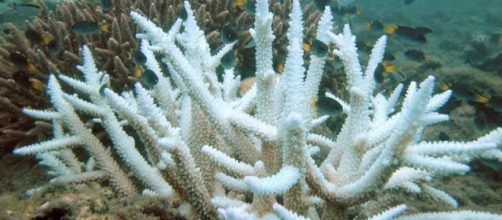Reports of extensive coral bleaching all over the world are worrying environmentalists. A new study reveals that nearshore corals at the Hanauma Bay Nature Preserve (HBNP) in O'ahu, Hawaii are at severe risk of bleaching due to the rise in global seawater temperatures. Although the corals in the region have been given protected status, the bleaching continues.
What is coral bleaching?
Coral bleaching takes place when the algae residing inside the corals are expelled by the coral itself as stress response to environmental factors. The corals are dependent on the algae for food and perish in their absence.
The cause of bleaching in the Hawaiian corals is the same as all over the world – warm water.
Coral reefs in Hawaii in danger
The study conducted by the researchers from the Hawaii Institute of Marine Biology recorded the corals at the HBNP suffering bleaching for the third time from 2014 to 2016. The study was led by the late Paul Jokiel and his team, who explored and investigated the amount of bleaching that took place in 2014 and 2015. Apart from this, the team also looked into the patterns and underlying causes of the bleaching.
CRAMP, or Jokiel's Coral Reef Assessment and Monitoring Program, has been keeping a lookout for the HBNP since 1999. Recent surveys document a substantial decrease in shallow coral cover since 2002.
In HBNP the reef-building corals form a sort of a barrier from one end of the bay to the other, effectively separating the nearshore shallow corals from the deeper seaward regions. The barriers come with two channels that control the inflow of cool water from the open ocean to the shore and its subsequent exit from the bay.
What did the study focus on?
The latest study focused particularly on these waterflow patterns as the scientists wanted to know why the bleaching took place more severely in some areas of the preserve. During the course of the study, the researchers discovered that maximum bleaching took place in areas where the water had the tendency to warm up and pool for longer period of times.
Other areas avoided bleaching as they were benefited from the inflow of the cool water.
The researchers found that 47 percent of flat corals at HBNP have undergone bleaching and 9.8 percent succumbed to death during the course of the study. The detailed findings have been published in journal “Peer J.” The researchers concluded that warm water due to climate change was responsible for most of the coral bleaching that took place in the protected area.


